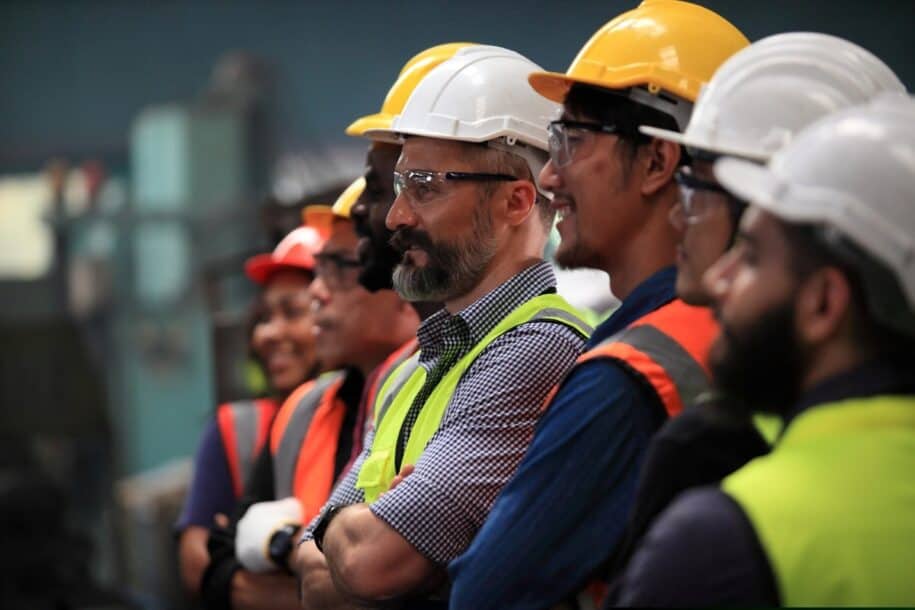Most safety management systems, such as ANSI Z10, are not revolutionary concepts. Recent developments, however, have improved their effectiveness and comprehensiveness. Despite these innovations, a safety management system by itself will not keep people safe, in the same way that a hammer left to its own devices will not build a house. As management legend Dan Peterson famously proclaimed, “Paper doesn’t save people, people save people.” What is the missing piece then? Leadership. This singular word describes a very great deal, which is probably why companies may choose to ignore and rely instead on appearances.
The idea of a safety management system is to handle safety in a comprehensive manner. Missing from this description, but equally (or even more) important, is the concept of leadership. There are several differences between management and leadership, but both are necessary to ensure the system is effective and desirable. Direction, alignment, relationships, personal qualities, and outcomes are among the main differences (Daft, 2011). The direction and focus of a management system may not leave room for addressing aspects of company culture and influence (factors that must be taken into consideration for any newly introduced change to be accepted). Therefore, a safety management system should either be renamed “safety leadership and management system” or be altered to also address the leadership aspects necessary for implementing and sustaining a viable program.
Diving deeper into the difference in direction for management and leadership requires looking closer at each in turn. Management entails planning and budgeting with a strong focus on the factors that affect the bottom line (i.e., production, cost, and schedule). In contrast, leadership focuses on setting clear goals and implementing strategies to achieve them. Safety is often managed through a collection of rules, policies, procedures, and even command-and-control direction from management. However, creating a system that can be followed requires the adoption of a clear vision as to why this is being done and communication of this mission on a personal level to ensure understanding. By first establishing a vision for the program, people can be motivated to follow this pathway to continual improvement. The importance of bringing management and leadership together cannot be overstated. As emphasized by Alan Quilley, the safety component of company culture is demonstrated by what is said and done collectively about safety (Quilley, 2005).
The second difference is that of alignment. Management exerts influence in an organization by creating boundaries. This segmentation often looks great on paper. For example, in safety management, this might take shape as the creation of safety responsibilities for each role and the establishment of rules and regulations. In this scenario, management has provided direction and would then expect compliance to be the natural result. However, experience shows that there is often a gap between the well-laid plan (strict adherence to every rule) and how it plays out (adaptation to the established working environment). To address the misalignment between rules and application, active leadership is key. With leadership working to create a shared culture and set of values that can support and inevitably lead to the desired vision, employees have a greater chance of conforming to the ideal management plan.
The third most striking difference between management and leadership is that of relationships. Management roles for organizations are often established within an objective-based hierarchy, meaning that within different departments, tiered positions are set up to achieve an end (e.g., the production of goods and services). For leadership, the objective is the development of people through professional motivation and personal influence. A commonly asked question within the safety industry that illustrates the importance of this dissimilarity is, “Do people follow our rules when nobody is watching?” If the suspected answer is unclear, it begs the follow-up, “Would people choose to follow a manager if you took away their formal position?” People follow health and safety guidelines more willingly if they are coached, not threatened (OSHA, n.d.).
It is important to note that the concept of coaching will be more difficult to put into practice in a company culture where psychological safety is not encouraged. As much as possible, those in charge should establish positive emotional connections with peers. This can be accomplished by authority figures keeping an open mind, listening, communicating respectfully, and conducting themselves professionally. If a manager intends to achieve positive results, yet their current expertise or set of skills within their role produces only rigid and unyielding rules, they must go beyond this, taking cues from leadership examples and engaging workers in relationships of exchange and support. Establishing feelings of inclusion in the work community and involvement in a worthwhile mission (i.e., the vision) are important steps to worker engagement. Leaders piling on expectations without clarification or modeling the desired behavior is a quick way to make sure that workers only participate in that activity when under direct supervision.
In recent years, the workplace has changed dramatically. Both the demands placed on workers and the complexity of the work environment have increased significantly. When workers are asked to continually assess risk and make good choices, critical thinking is expected, especially as it relates to safety. While management may idealize the stability and order associated with an efficient program, will that come to fruition when introduced to dynamic (and sometimes strained) human interactions? Richard Daft believes that leadership should promote openness and honesty, positive relationships, and innovation to help an organization succeed in the long run (Daft, 2011, p. 19). Strict, unquestioning adherence will suppress innovation and is usually unattainable.
Leadership principles are critical in the establishment of a successful safety management system. Drafting a safety program is the first step – reviewing how it is used and working with people to garner practical adjustments and overall adoption are essential next steps to ensure sustainability. The program must have a purpose that is known and understood. Expectations must match reality; if they do not, positive changes will have to be made. If the object of a safety management program is to ensure every person works safely and goes home at the end of the day as healthy as when they arrived, the work environment will need to be one where employees are engaged, where they have a voice and play an active role in achieving this desired effect.
References
Daft, R. L. (2011). The leadership experience (5th ed.). Mason, Ohio: Thomson/South-Western.
Occupational Safety & Health Administration. (n.d.). Better Safety Conversations. US Department of Labor. https://www.osha.gov/sites/default/files/SHP_Better-Safety-Conversations.pdf
Quilley, A. D., Michaels, B. J., & McDonall, G. (2005). The emperor has no hard hat: Achieving real workplace safety results. Sherwood Park, Alta: MBQ Solutions.
AUTHOR BIO:-

Cary comes to the SafetyStratus team as the Vice President of Operations with almost 30 years of experience in several different industries. He began his career in the United States Navy’s nuclear power program. From there he transitioned into the public sector as an Environmental, Health & Safety Manager in the utility industry. After almost thirteen years, he transitioned into the construction sector as a Safety Director at a large, international construction company. Most recently he held the position of Manager of Professional Services at a safety software company, overseeing the customer success, implementation, and process consulting aspects of the services team.
At SafetyStratus, he is focused on helping achieve the company’s vision of “Saving lives and the environment by successfully integrating knowledgeable people, sustainable processes, and unparalleled technology”.
